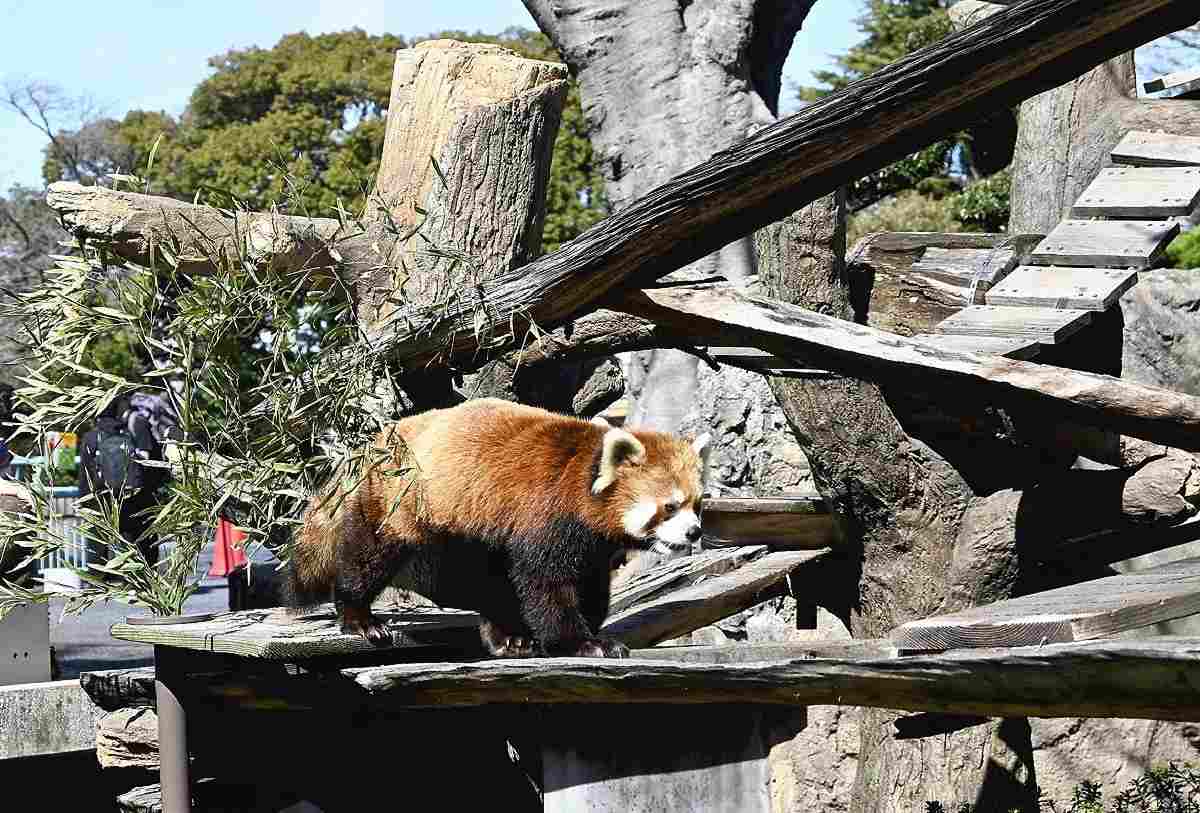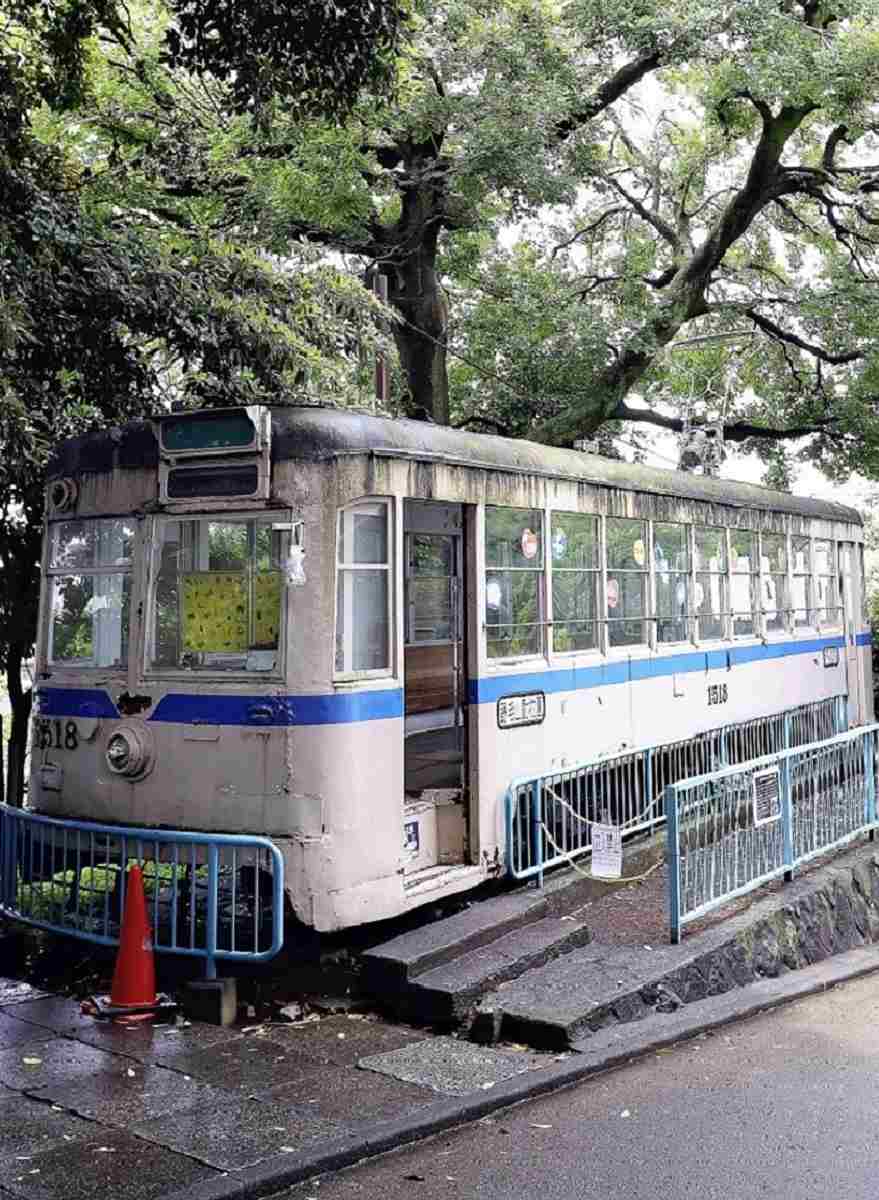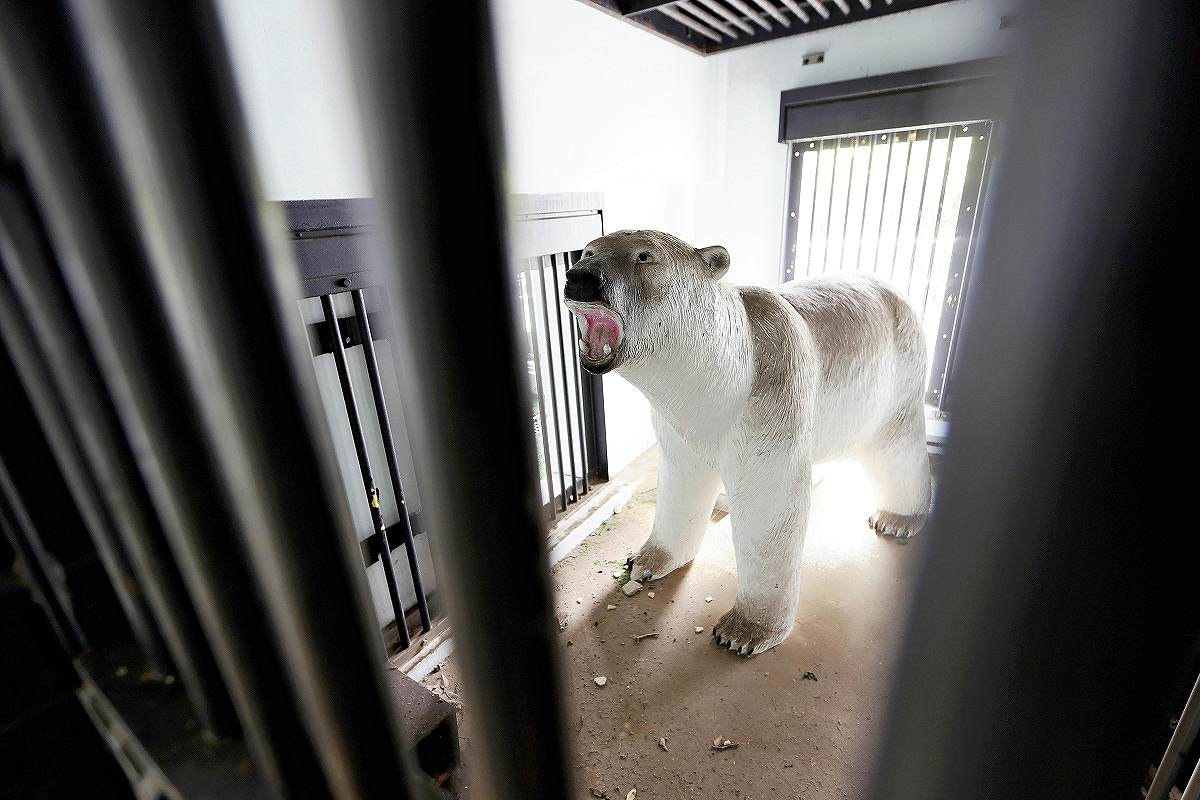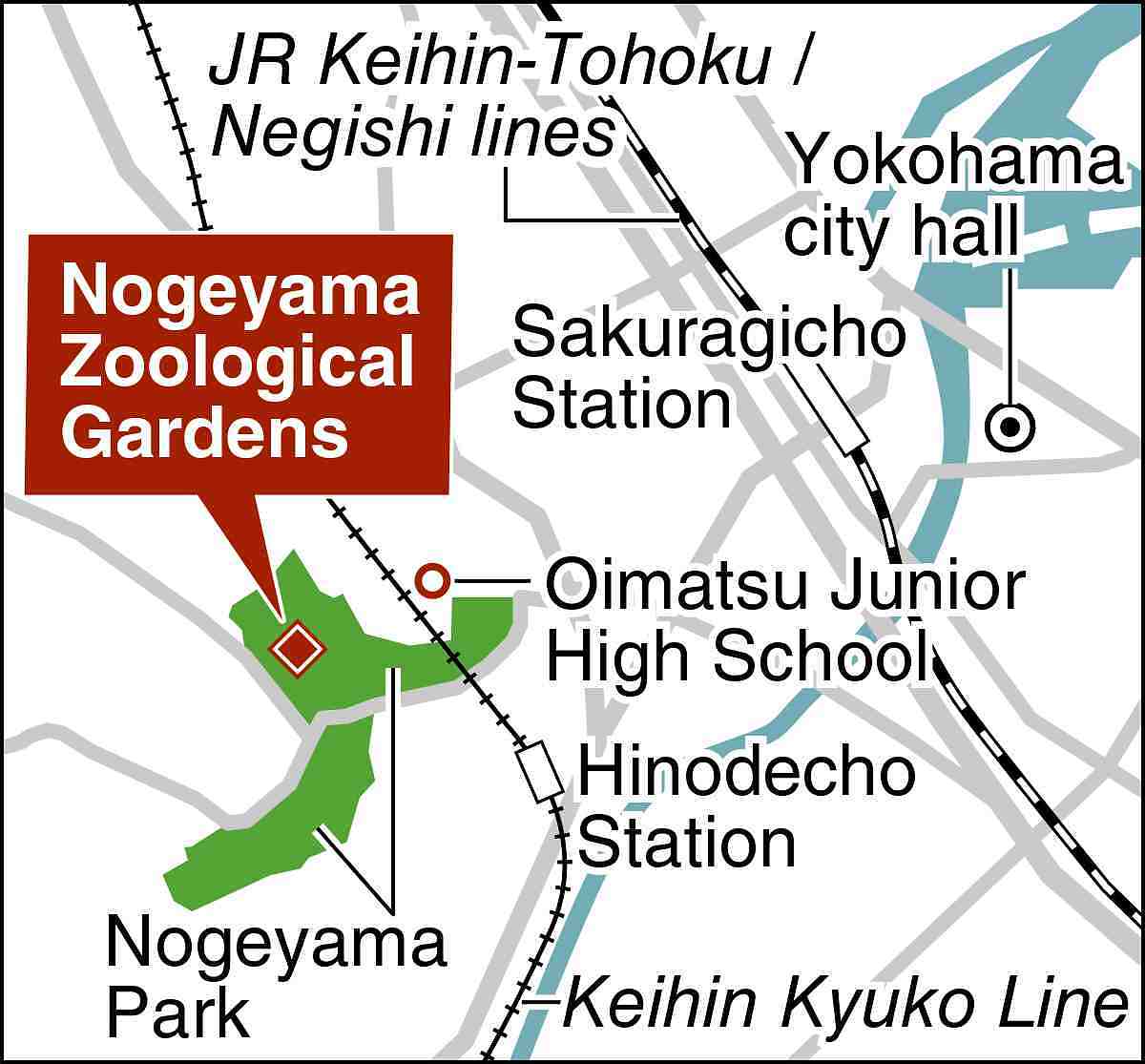Yokohama Zoo Offers Home to Red Pandas, Rare Birds; City Plans Renovation Work for Barrier-Free Access

A red panda walks on a wooden walkway at Nogeyama Zoological Gardens in Nishi Ward, Yokohama.
6:00 JST, July 16, 2024

A tram car that used to run in Yokohama
Nogeyama Zoological Gardens is a 15-minute walk from the west exit of JR Sakuragicho Station in Yokohama. I walked through an area with restaurants before ascending a hill. Just as I was about to run out of breath, the entrance gate came into view.
The 3.3-hectare municipal zoo in Nishi Ward, Yokohama, occupies one-third of Nogeyama Park, which overlooks the Minato Mirai 21 district. As many as 1,300 animals of about 70 species live at the zoo, including lions, giraffes and red pandas. The zoo opened in 1951 as part of an amusement park, which closed in 1964 to make way for a reservoir. The zoo remained and became admission-free.
“The park has become a popular walk for people like families and kindergarteners,” said 25-year-old zoo employee Miki Degawa.
At one of the roofless areas, a popular red panda walks back and forth along a wooden walkway to the delight of visitors. On hot days when the animal prefers to stay inside, visitors can be comforted by stuffed red pandas and other goods available at the gift shop.


Top: A model of a polar bear is seen in the “Shirokuma no Ie,” or polar bear house. Bottom: A pair of black-faced spoonbills
Down the steps on the left, next to the red panda house, is the “Shirokuma no Ie” (polar bear house), where polar bears were kept until 1999. The door to the space is secured with three locks — a reminder of how powerful polar bears can be. Four life-size models of the bear have been placed inside the sleeping area and in the outdoor exhibit space.
The zoo is also home to rare birds and in 1972 became the first in Japan to successfully breed condors. Since 1989, it has been breeding cagous, a rare bird that can only be found in the wild in New Caledonia. A pair of black-faced spoonbills, whose beaks resemble a shamoji rice paddle, were also nesting together at the zoo.
The park has been in operation for over 70 years, so the Yokohama city government is planning renovation work due to its ageing facilities and lack of barrier-free access. However, the city has said that the zoo will not change its free admission policy.
***

Nogeyama Zoological Gardens
Address: 63-10 Oimatsucho, Nishi Ward, Yokohama
Access: 10-minute walk from Hinodecho Station on the Keikyu Line or 15-minute walk from Sakuragicho Station on the JR Keihin-Tohoku / Negishi lines
Hours: 9:30 a.m. to 4:30 p.m. Admission free. Closed on Mondays.
Related Tags
"Features" POPULAR ARTICLE
-

Sanrio to Open Museum in Yamanashi Pref. Dedicated to Founder, Exhibits Include Hello Kitty, Other Characters
-

Autumn Foliage Surrounds Visitors to Tokyo’s Showa Kinen Park
-

My Daughter No Longer Speaks to Me, But I Want to See Her and My Grandchild
-

Kumamoto: Public Bath Refurbished as Library Where You Can Chat, Take Photos
-

Frozen Vegetables: Demand Rises for Convenient, Tasty Domestic Produce
JN ACCESS RANKING
-

Tokyo Economic Security Forum to Hold Inaugural Meeting Amid Tense Global Environment
-

Keidanren Chairman Yoshinobu Tsutsui Visits Kashiwazaki-Kariwa Nuclear Power Plant; Inspects New Emergency Safety System
-

Imports of Rare Earths from China Facing Delays, May Be Caused by Deterioration of Japan-China Relations
-

University of Tokyo Professor Discusses Japanese Economic Security in Interview Ahead of Forum
-

Japan Pulls out of Vietnam Nuclear Project, Complicating Hanoi’s Power Plans

























